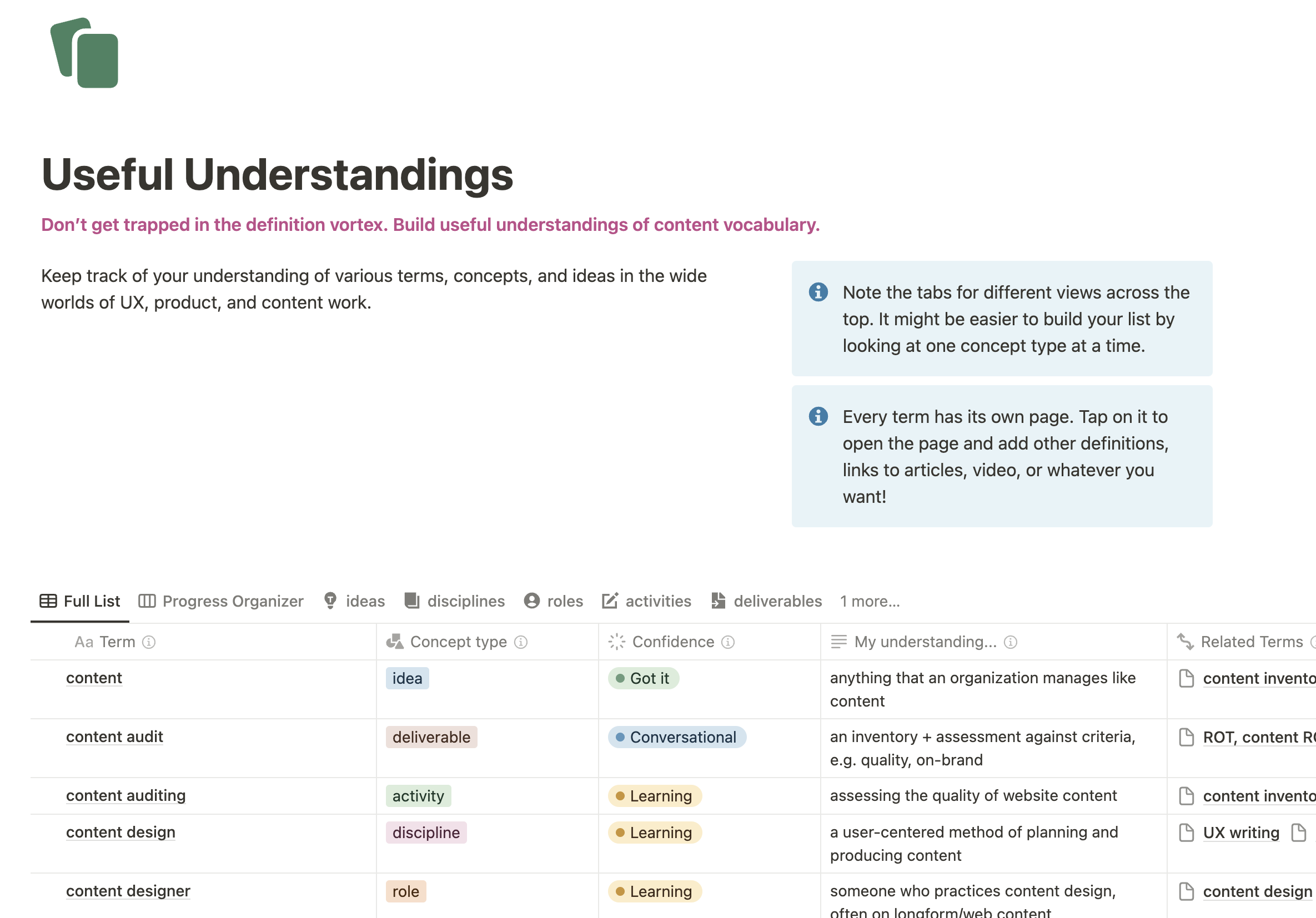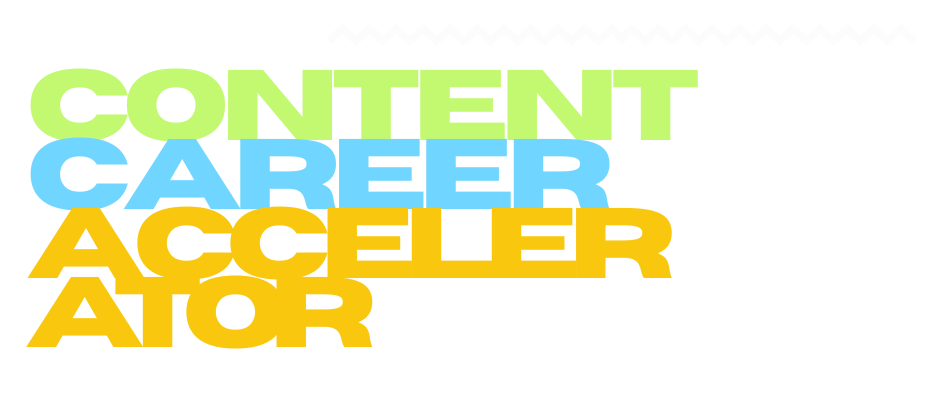Don’t look for the ‘right’ definition. Build a useful understanding instead.
Specialized vocabulary — often called jargon — might be an annoyance, obstacle, or full-on road block depending on where you are in your career and where you’re trying to get to.
Understandably so. It’s confusing and intimidating to discuss something you feel like you do (or should) understand when you aren’t 100% confident about the vocabulary being used. This feeling is particularly common amongst career pivoters and other folks new to content and design roles. It can even happen when you simply find yourself talking to folks from a different department than you’re used to interacting with in your current role, like marketing or legal.
Every discipline and specialization gives rise to new language and terminology. Some of this vocabulary is created to refer to new concepts and ideas, or to highlight important distinctions between similar concepts. And sometimes, it’s just new words for old stuff, invented by consultants or influencers to try to own a part of the market.
Worse, not everyone using specialized professional vocabulary is using it correctly, nor consistently.
It would be nice to be able to inject all of the vocabulary into your brain, like Neo learning kung-fu in The Matrix.
Until then, we have a few tips for navigating these jargon jam-ups in your career.
Know that you can do this.
You might not remember it, being a baby and all, but when you were born, you knew zero words. Not a one!
Your vocabulary has increased considerably since then. (Nice work!)
New words and terms are learnable. You’ll get there!
You’re reading a free lesson from Outcomes & Obstacles, the third module of our Career Kickstarter course. Career Kickstarter is a self-paced career strategy course for content professionals, included with all CCA memberships.
Read widely, and beyond your comfort level.
Many immigrants learn the language of their new home through media exposure and everyday activities. They watch news and sports in the local language, converse with store clerks as best as they can, and otherwise try to conduct their business in a new language far before they’re truly fluent.
Take inspiration from this. To become someone who knows, you have to first be comfortable with not knowing. Read articles and books you don’t fully understand. Attend events or watch recordings on topics that feel beyond your current skill level. You might not remember it anymore, but this is how you learned many words beyond the conversational level the first time — encounter a new term, pause, look it up, repeat. You can do it again!
Bonus tip: Look for curated collections of information from a variety of voices, such as a conference, or a publication focused on a specific topic. Then, try to watch, read, or otherwise engage with as much stuff from that source as you can — if it’s a web conference, don’t just go to the content sessions, go to the ones on front-end development or visual design, too. If it’s a publication, try reading or listening to everything they put out for a few weeks or months. You might find yourself starting to pick things up faster than you realize, as words that were once unfamiliar show up in a variety of contexts and your clever little brain starts to piece it all together.
Remain curious and listen hard.
Frustration with jargon, linguistic redundancy, and semantic diffusion is understandable. But it can also be unhelpful if you allow that frustration to short-circuit your curiosity.
Sometimes when things sound similar, people assume they are the same. This might be the case. Or it might not! For instance, to some, “content strategy” and “content marketing strategy” are synonymous terms, but a great many content strategists would disagree with them!
Be curious about why a given term came to be used in a given discipline. Why that word, and not another? Why the specialized word, and not the more common one? Remaining curious in this regard, and conducting relevant research, can help you form a more complete mental map of a discipline than many other practitioners who decide to shrug it off and say “close enough”. Through curiosity, what feels like a gap right now can in fact become your strength.
Ask for clarification.
Smart content practitioners don’t take understanding for granted. If you’re not sure how someone is using a given term, ask! You can even do this in interviews. For instance:
- Interviewer: Can you tell me about a time you optimized the messaging in a flow?
- You: I’d be happy to talk about that! I’ve found that messaging can mean different things in different contexts — are you talking about improving interface copy in general? Or more about emphasizing a key idea or storyline across a specific task flow?
And you might even want to make sure you’re aligned on what they mean by flow, too!
- Related: I’m interviewing for a content strategy job. How do I sound like I know what I’m talking about?
Collect definitions — or, rather, useful understandings.
One of the first tools many content folks implement on a project is a glossary. Even if everyone in the room is an experienced design professional, they still come from different backgrounds and cultures and have likely developed different relationships to some more common business and design jargon.
You can build a glossary for yourself. Collect quotes from books and web searches, make separate note files for topics of interest, and start to build a web of knowledge you can refer back to.

As you build your glossary, you will come to see that different practitioners have different ways of expressing similar ideas, even when they are talking about the same thing. Generally, neither one of them is “right” or “wrong” — rather, they are offering what we like to call a useful understanding of a term. We’ll talk more about these useful understandings later in this course, and give you a tool to track them. For now, just keep an open mind, and make note of any terms you’re starting to learn about.
There’s more where that came from! Join one of our upcoming open houses to learn more about membership in Content Career Accelerator, including the Career Kickstarter course this lesson is from and its associated workbook.
